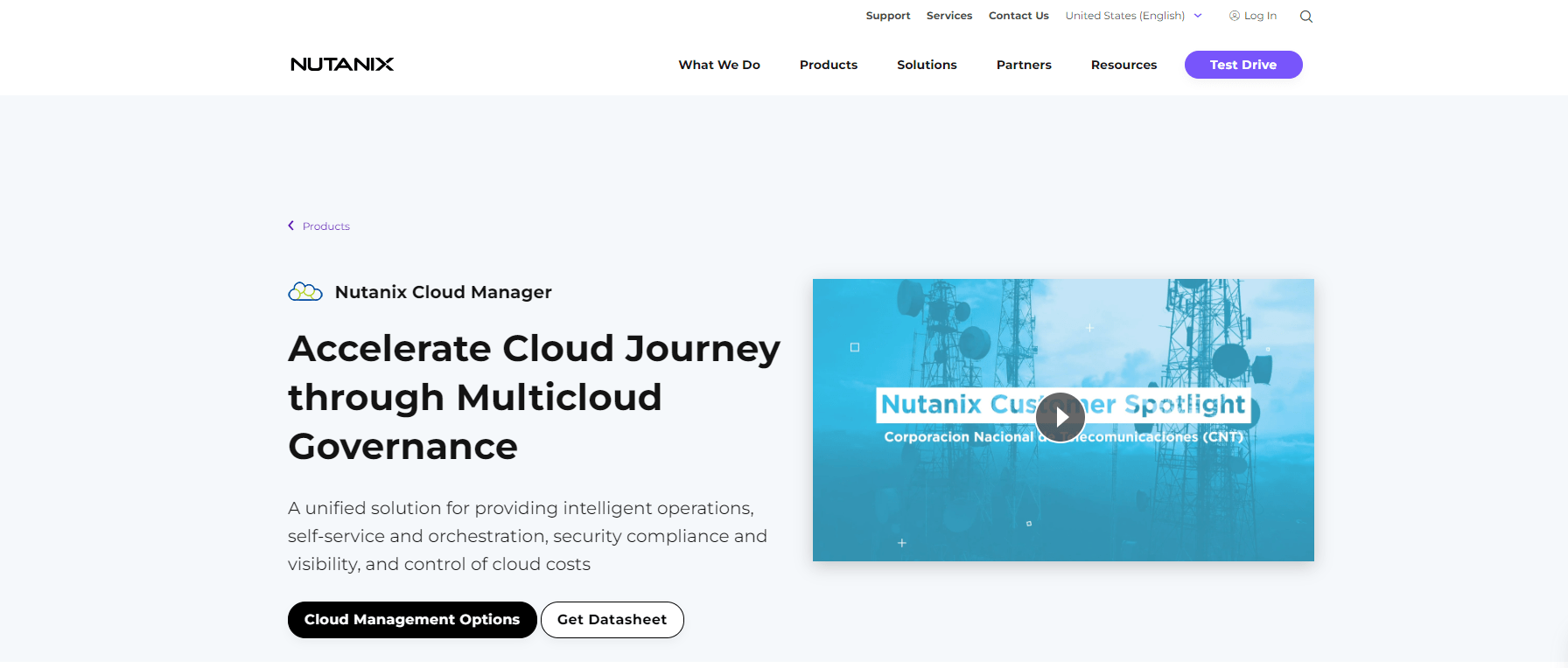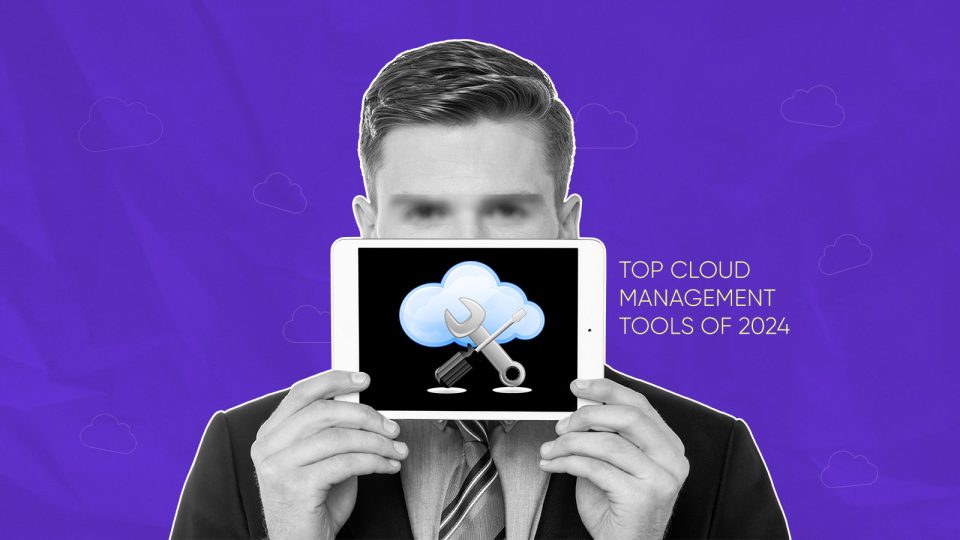Google Cloud Defines Cloud Management as maintaining control and oversight of cloud computing infrastructure, resources, and services in public, private, or hybrid cloud environments. With cloud management tools and technologies, IT administrators achieve control, visibility, and scalability while adapting rapidly to change.
Cloud management encompasses the systematic administration of cloud computing solutions and services deployed within cloud infrastructures. It entails implementing processes, strategies, policies, and technological tools to regulate and sustain operations across public, private, hybrid, or multi-cloud environments.
In the contemporary business environment, reliance on cloud computing is pervasive, necessitating organizations to optimally assess, monitor, and administer cloud-based resources, infrastructure, and services.
The efficient operation of cloud environments mandates diverse tasks, including resource provisioning, orchestration, automation of consumption and deployment, lifecycle management, cost optimization, performance monitoring, and security enforcement.
Introduction to Cloud Management Tools
Best Cloud Management Software
1. Google Cloud Management Tools
-
Cloud Endpoints:
- Utilizes an NGINX-based proxy and distributed architecture for unparalleled performance and scalability.
- It offers tools for every phase of API development and insights provided by Cloud Monitoring, Cloud Trace, and Cloud Logging.
- Features lightning-fast response times (less than 1 ms per call) and world-class monitoring capabilities.
-
Google Cloud App:
- Provides a convenient mobile platform for discovering, understanding, and responding to production issues within Google Cloud resources.
- Enables incident management and alerts, customizable dashboards, and diagnostics for issue resolution.
-
Cost Management:
- Offers visibility, accountability, control, and intelligence to manage and scale cloud costs with confidence effectively.
- Includes resource hierarchy, access controls, reports, dashboards, budgets, alerts, and cost optimization recommendations.
-
Intelligent Management (Active Assist):
- Leverages data, intelligence, and machine learning to simplify cloud management tasks and optimize performance, security, and cost.
- It provides tools for optimizing cloud performance and cost with minimal effort and reducing administrative burden.
-
Carbon Footprint:
- Allows users to accurately measure the carbon emissions associated with Google Cloud service usage.
- Monitors cloud emissions over time by project, product, and region, with options to export data for further analysis or inclusion in emissions accounting.
- Visualizing carbon insights through dashboards and charts facilitates efforts to reduce emissions from cloud applications and infrastructure.
2. IBM Cloud
 IBM Cloud is a suite of cloud computing services provided by IBM, a renowned entity in the technology industry. Tailored to cater to large-scale applications, it emerges as a premier choice for enterprises grappling with complex and expansive operations that necessitate robust and reliable infrastructure.
IBM Cloud is a suite of cloud computing services provided by IBM, a renowned entity in the technology industry. Tailored to cater to large-scale applications, it emerges as a premier choice for enterprises grappling with complex and expansive operations that necessitate robust and reliable infrastructure.
Key Features and Benefits:
- Extensive Capabilities: IBM Cloud boasts a comprehensive range of capabilities underpinned by its proven track record in effectively managing enterprise-scale operations.
- Robust Infrastructure: The platform’s robust infrastructure distinguishes it in handling high-demand scenarios, ensuring seamless operations even under significant loads.
- Service Offerings: Offering a spectrum of solutions, including Infrastructure as a Service (IaaS), Platform as a Service (PaaS), and Software as a Service (SaaS), IBM Cloud enables businesses to tailor its services to their specific requirements.
- AI-Powered Functionality: Leveraging AI-powered capabilities such as IBM Watson, the platform provides cutting-edge functionality, empowering enterprises with advanced analytical insights and decision-making support.
- Integration Capabilities: IBM Cloud seamlessly integrates with various IBM services and third-party applications, facilitating a well-rounded ecosystem and enhancing interoperability across diverse software solutions.
3. Nutanix Cloud Manager
 Designed for hybrid and multi-cloud deployments, Nutanix Cloud Manager offers simplified infrastructure management through self-service provisioning, application blueprints, and automated lifecycle management. Its core strengths encompass rapid provisioning, workload mobility, and automated cost optimization, making it a robust solution for modern IT environments.
Designed for hybrid and multi-cloud deployments, Nutanix Cloud Manager offers simplified infrastructure management through self-service provisioning, application blueprints, and automated lifecycle management. Its core strengths encompass rapid provisioning, workload mobility, and automated cost optimization, making it a robust solution for modern IT environments.
Key Features:
- Hybrid and Multi-Cloud Management: Nutanix Cloud Manager simplifies management across various cloud platforms and on-premises infrastructure, facilitating seamless integration and centralized control.
- Rapid Provisioning and Workload Mobility: Leveraging self-service capabilities, application blueprints, and automated lifecycle management, Nutanix Cloud Manager enables rapid provisioning and workload mobility, enhancing agility and responsiveness.
- Automated Cost Optimization:
- The platform incorporates built-in features for automated cost optimization, ensuring efficient resource utilization.
- Integration with Nutanix Prism provides AI-powered insights for proactive cost management and optimization.
- Seamless Nutanix Ecosystem Integration: Nutanix Cloud Manager seamlessly integrates with the Nutanix ecosystem, augmenting its capabilities and enhancing overall infrastructure management efficiency.
Oracle Cloud Infrastructure
4. Datadog Cloud Management
 Datadog Cloud Management offers comprehensive monitoring and optimization capabilities, enabling businesses to track the health and performance of their entire infrastructure seamlessly. With a focus on efficiency and collaboration, Datadog empowers organizations to streamline operations, identify inefficiencies, and enhance reliability across their IT ecosystem.
Datadog Cloud Management offers comprehensive monitoring and optimization capabilities, enabling businesses to track the health and performance of their entire infrastructure seamlessly. With a focus on efficiency and collaboration, Datadog empowers organizations to streamline operations, identify inefficiencies, and enhance reliability across their IT ecosystem.
Advantages and Characteristics
- Unified Monitoring Across Environments:
- Monitor cloud-based, hybrid, and on-premise services, including serverless functions, databases, containers, and more.
- Leverage Datadog’s 700+ vendor-backed integrations for comprehensive insights into your entire stack.
- Customized Dashboards and Real-Time Insights:
- Create customized or out-of-the-box dashboards effortlessly, providing real-time visibility into infrastructure metrics, application traces, logs, and security signals.
- Navigate seamlessly among different data sources on a unified platform, facilitating faster troubleshooting and trend analysis.
- Resource Optimization and Cost Reduction:
- Ensure optimal resource allocation across cloud providers.
- To reduce operational costs, identify underutilized cloud and on-premise servers using real-time host maps and historical data analysis.
- Automated Issue Detection and Resolution:
- Detect anomalies within your infrastructure within seconds using Datadog’s Watchdog feature.
- Monitor containers dynamically and visualize highly granular data in real time to identify and resolve issues promptly.
- Enhanced Collaboration and Efficiency:
- Improve collaboration across teams with workflow integrations such as Slack and Jira.
- Access and work with the same datasets effortlessly using intuitive tag filtering, custom dashboards, and publicly shareable links, enhancing cross-departmental collaboration.
- App Reliability and Security:
- Diagnose root causes faster by correlating query metrics with database and infrastructure metrics.
- Keep sensitive data secure by automatically obfuscating personally identifiable information (PII) in explaining plans and query metrics.
- Advanced Alerting and Monitoring:
- Set up alerts for anomalies and outliers with a single click, accounting for daily, weekly, and seasonal fluctuations.
- Proactively prevent outages by alerting on metric forecasts and combining alerts for greater granularity.
- Effortless Deployment and Management:
- Deploy and start monitoring without the need for professional services or extensive training.
- Promote adoption across your organization with Datadog’s intuitive user interface, which requires no query language and can be used by anyone.
5. BMC Multi-cloud Management Software
BMC Multi-Cloud Management offers a comprehensive suite of products and services to effectively address the diverse challenges of managing cloud infrastructure. Focusing on enhancing performance, optimizing costs, ensuring security, and streamlining service delivery, BMC empowers organizations to navigate the complexities of multi-cloud environments seamlessly.
Challenges in Cloud Infrastructure Management: According to the RightScale 2017 State of the Cloud Report, 51% of organizations cite migrating data and applications to the cloud as a significant challenge.
Key Capabilities:
- Multi-Cloud Migration:
- Guidance on assessing migration requirements, cost estimation, and ensuring security throughout the migration process.
- Capabilities include creating and executing migration plans, simulating migrations, forecasting costs, and establishing governance for ongoing security and compliance.
- Multi-Cloud Cost Management:
- Tools for forecasting cloud costs, automating cost reporting, and optimizing expenses to ensure efficient resource utilization.
- Solutions such as Service Assurance and Optimization enable continuous optimization of IT costs and capacity based on business demand.
- Multi-Cloud Service Management:
- Streamlining service delivery across multi-cloud, multi-device, and multi-channel environments.
- Features predictive service management through cognitive automation, incident and change management integration, and agile development support.
- Multi-Cloud Visibility:
- Comprehensive visibility into hybrid assets, automated dependency mapping, and seamless inventory, security, migration, and change management.
- BMC Helix Discovery offers visibility into all IT assets and dependencies across on-premises and cloud environments.
- Multi-Cloud Performance Monitoring:
- Monitoring performance across hybrid environments, managing performance of critical applications, and ensuring optimal end-user experiences.
- TrueSight Operations Management provides machine learning and advanced analytics for holistic monitoring and event management.
- Multi-Cloud Automation:
- Automating orchestration of data, applications, and infrastructure across different cloud environments to speed up innovation and time to market.
- Solutions like Control-M and TrueSight Automation for Servers enable automated workflows and infrastructure management.
- Multi-Cloud Security:
- Aligning security, operations, and development teams to mitigate risks, automate remediation, and ensure compliance.
- BMC Helix Remediate offers automated vulnerability management for enhanced security and efficiency.
Conclusion
In conclusion, selecting the right Cloud Management Tool or software is critical for organizations aiming to harness the benefits of cloud computing effectively. By defining clear corporate objectives, assessing scalability and flexibility, ensuring multi-cloud compatibility, prioritizing ease of use, examining security and compliance features, understanding cost and ROI, evaluating customer support, and researching user feedback, companies can make informed decisions tailored to their specific needs and goals.
The featured cloud management tools offer diverse capabilities to address cloud infrastructure challenges comprehensively. From monitoring and optimization to cost management, security, service delivery, performance monitoring, automation, and beyond, these platforms empower organizations to navigate the complexities of multi-cloud environments seamlessly, enhancing efficiency, reliability, and innovation across their IT ecosystem.
FAQs
1. Process of deploying and accessing cloud management tools.
Cloud management tools are traditionally deployed as virtual machines with their database and server infrastructure. Administrators can access these tools from any location with a secure internet connection, ensuring flexibility and ease of management.
2. In what ways do cloud management tools support eco-friendly initiatives?
Cloud management strategies can drive initiatives to reduce resource wastage and lower energy consumption within cloud infrastructures. They enable organizations to accurately measure carbon emissions associated with cloud service usage and facilitate efforts to reduce emissions from cloud applications and infrastructure.
3. How can cloud management tools enhance collaboration and efficiency within organizations?
Cloud management tools offer customizable dashboards, real-time insights, automated issue detection and resolution, enhanced collaboration through workflow integrations, and effortless deployment and management. These capabilities improve cross-departmental collaboration, streamline operations, and enhance organizational efficiency.
4. How do cloud management tools facilitate automation?
Cloud management tools offer automation capabilities for resource provisioning, deployment, orchestration, and lifecycle management tasks. They streamline routine tasks, reduce manual intervention, and enable agile development across the application lifecycle, ultimately accelerating time-to-value and minimizing errors.
5. Describe how cloud management tools enhance security measures.
Cloud management tools integrate robust security measures, including machine learning for threat detection, streamlined security monitoring, and automated incident management processes. They safeguard data, applications, and services within cloud environments by enforcing security policies, ensuring compliance, and facilitating prompt resolution of security incidents.
[To share your insights with us as part of editorial or sponsored content, please write to sghosh@martechseries.com]


